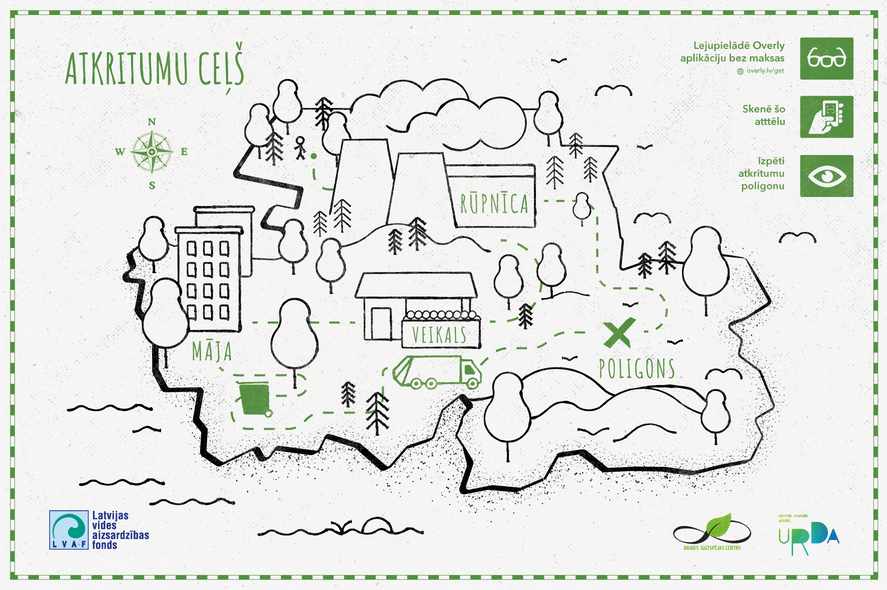Quality engagement key measurable in education
Although the number of postcard scans would be the most fundamental metric for many businesses, quality of individual interactions are more important in this educational project, emphasizes Liena. “Yes, of course, we will be tracking scans, but the purpose of the augmented reality card is to capture those interested and demonstrate the waste journey to them, educate people on how the landfill operates, and how many processes occur here. The clickable location markers also encourage users to visit our website or play games created for the campaign. This provides multiple virtual access points for people to engage with the topic and helps us to cross-promote other avenues of information.”
The team is currently sharing the postcard during online lectures, but they expect to derive the most value of AR functionality when the lockdown is complete and all visitors get physical cards. “It’s not the same effect when you scan a computer screen. The fact that the printed card comes to life in someone’s hands is what makes it a wonderful project. Once the world is back in order, AR postcards will serve as a great tool to capture attention and educate people on how the landfill operates,” Liena adds.
The educational augmented reality postcards are part of a wider campaign “Create without creating waste” (Radi, lieku neradot!”), in which Daibe Sustainability Center and Nature and Technology Park “URDA” have joined forces to allow young people to learn about the circular economy and its connection to the environment. Project implementation no. 1-08/76/2020. Funded by Latvian Environmental Protection Fund.


